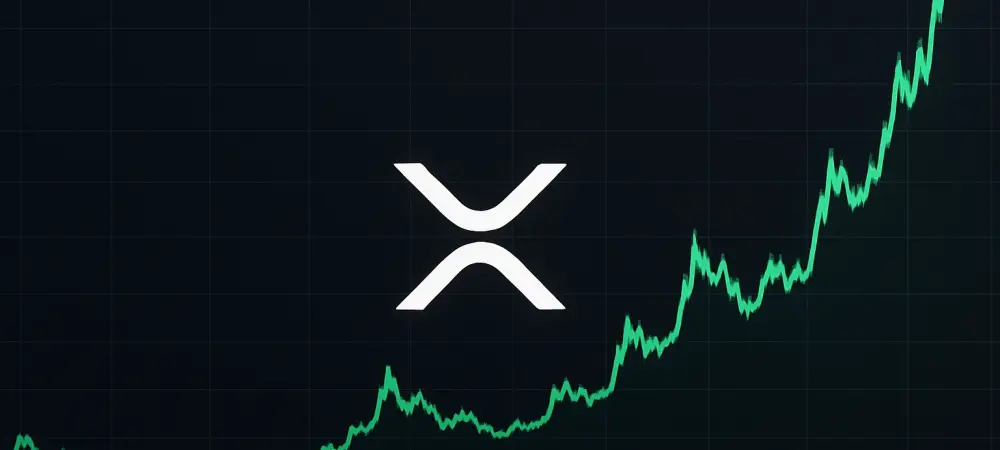In the bustling world of cryptocurrency, XRP stands as a beacon of innovation, promising lightning-fast cross-border payments at a fraction of traditional costs, and painting a vision of a global financial system where transactions clear in seconds, not days. Powered by Ripple’s cutting-edge technology, this digital asset captivates investors. Yet, in 2025, XRP’s price remains a puzzle, swayed by legal battles, market swings, and institutional moves. How does a coin with such potential navigate a landscape of uncertainty, and what does its current valuation reveal about the future of finance?
This exploration dives deep into XRP’s standing today, a cryptocurrency designed to bridge international transactions with unparalleled efficiency. Its significance lies not just in speculative trading but in its potential to reshape how money moves across borders. With RippleNet gaining traction among banks and payment providers, XRP’s story is one of real-world impact colliding with regulatory roadblocks. The following insights unpack the forces at play, offering investors a lens into what drives this unique asset’s price right now.
Decoding XRP’s Current Landscape
XRP isn’t merely another name in the crowded crypto market; it serves a distinct purpose as a bridge currency for near-instant international transfers. Unlike many digital assets fueled by hype, Ripple’s creation focuses on solving a tangible problem—slow and costly remittances. Today, with partnerships spanning continents, XRP facilitates transactions through RippleNet, often outpacing traditional systems like SWIFT in both speed and affordability.
The stakes for XRP remain high as its utility draws attention from global financial players. Major banks and remittance services have integrated Ripple’s technology, signaling trust in its framework. However, this adoption is juxtaposed against a backdrop of uncertainty, where a single policy shift or legal ruling can alter its trajectory. For investors, understanding XRP’s niche is the first step in gauging whether its price reflects true value or looming risks.
Forces Shaping XRP’s Price Today
Several critical elements influence XRP’s valuation in the current market, each carrying significant implications. Regulatory scrutiny, particularly from the U.S. Securities and Exchange Commission (SEC), continues to cast a shadow over its domestic prospects. A resolution in Ripple’s favor could unleash pent-up demand, while an unfavorable outcome might suppress its price below key thresholds like $1.
Beyond legal hurdles, institutional adoption plays a pivotal role in driving XRP’s worth. Partnerships with financial entities in regions like Asia and the Middle East highlight growing demand for RippleNet’s solutions. Additionally, broader crypto market trends often dictate XRP’s movements—bullish cycles led by Bitcoin can lift its price, yet competition from peers like Stellar (XLM) poses a constant challenge. Meanwhile, Ripple’s involvement in Central Bank Digital Currency (CBDC) pilots adds a layer of intrigue, potentially positioning XRP as a stable player in digital finance.
Voices from the Market: Expert Takes on XRP’s Value
Analysts and industry insiders offer diverse perspectives on XRP’s current price and near-term outlook, reflecting both optimism and caution. Some project a bullish range of $3 to $5 if regulatory clarity emerges and partnerships expand, citing historical patterns where XRP surged during favorable conditions. Others adopt a more tempered view, estimating a steady $1.50 to $2.50, contingent on gradual adoption and market recovery.
On the flip side, bearish forecasts linger around $0.50 to $0.80, driven by fears of tightened regulations or fading interest from investors. A seasoned market observer remarked, “XRP’s price is tied to its practical use—if Ripple secures regulatory wins, its value could transform overnight.” These varied opinions underscore the unpredictable nature of XRP’s path, urging stakeholders to weigh both potential gains and pitfalls carefully.
XRP’s Pivotal Role in Today’s Financial Ecosystem
Looking at the bigger picture, XRP’s relevance in 2025 hinges on macro trends reshaping global finance. The rise of CBDCs presents a unique opportunity, with Ripple already collaborating on pilot programs with central banks. Such developments could redefine XRP’s identity, shifting it from a speculative asset to a cornerstone of digital payment systems over the next few years, say from 2025 to 2027.
Moreover, expanding agreements with financial institutions in less regulated markets provide a buffer against U.S.-centric challenges. This global outreach suggests XRP could thrive regardless of domestic constraints, provided it maintains a competitive edge over traditional and crypto-based alternatives. For market watchers, these dynamics highlight why XRP remains a focal point in discussions about the future of money movement.
Strategies for Engaging with XRP Investments
For those considering XRP as part of their portfolio today, a strategic mindset is essential to navigate its volatility. Assessing personal risk tolerance is key, given the asset’s susceptibility to sudden price shifts and unresolved legal issues. Diversifying across other cryptocurrencies or non-digital investments can help mitigate exposure to XRP-specific downturns. Keeping a close eye on Ripple’s latest partnerships and regulatory updates offers critical cues for timely decisions. Allocating only a fraction of capital to XRP, balanced with more stable options like stablecoins, is a prudent approach. Additionally, exploring passive income avenues, such as cloud mining platforms like HashJ, provides a way to engage with crypto markets without direct reliance on price fluctuations. Staying adaptable amid evolving financial trends ensures investors are prepared for rapid shifts in XRP’s landscape.
Reflecting on XRP’s Journey and Next Moves
Looking back, XRP’s path through recent years has been a rollercoaster of innovation and obstacles, with its price in 2025 reflecting a delicate balance of utility and uncertainty. The cryptocurrency has carved a niche in cross-border payments, yet regulatory and competitive pressures have often tempered its ascent. Each partnership forged and legal battle fought has shaped its current standing, leaving a legacy of resilience amid adversity.
For investors and enthusiasts who have followed its trajectory, the focus shifts to actionable steps ahead. Exploring diversified portfolios to cushion against volatility becomes a priority, while staying informed on Ripple’s global moves offers a competitive edge. Engaging with alternative crypto income sources has proven a viable detour for the risk-averse. As the digital finance realm continues to evolve, XRP’s story serves as a reminder that adaptability and insight are the true currencies of success.

